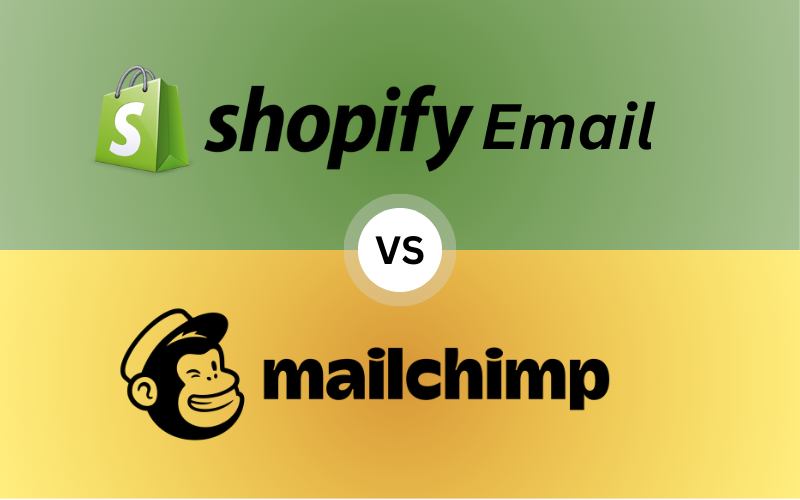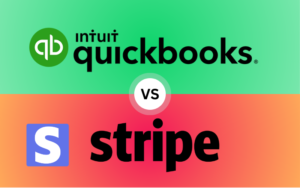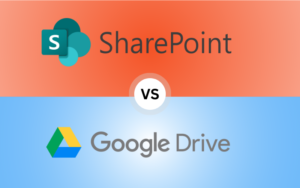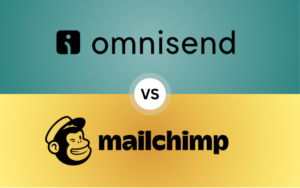“Shopify Email vs Mailchimp – Uncover how these email marketing tools serve businesses of all sizes, from startups to fully operational enterprises. Explore the critical differences to help you choose the right platform in 2024.”
TL;DR:
In 2024, the competition between Shopify Email vs Mailchimp continues to evolve, with both platforms excelling in different areas. Shopify Email is ideal for startups and small businesses that use Shopify, offering affordability, simplicity, and seamless integration with the e-commerce platform. For businesses that need advanced automation, segmentation, and in-depth analytics, Mailchimp is the superior choice, particularly for growing or fully operational companies. Whether you’re managing basic campaigns or running highly sophisticated marketing efforts, this guide will help you navigate the unique strengths of each tool at every stage of your business. We’ll also recommend three top alternatives for those seeking different options at the end of the article.
Table of Contents
Introduction: Shopify Email vs Mailchimp in 2024?
Email marketing is as vital as ever in 2024 for businesses looking to stay connected with customers, boost sales, and improve engagement. Whether you’re managing a growing online store or a fully operational enterprise, the email marketing platform you choose can make a big difference in your marketing efficiency and results. Shopify Email and Mailchimp are two of the top contenders in this space, but they serve different needs depending on the size and complexity of your business.
For Shopify users, Shopify Email offers the obvious advantage of native integration, making it easy for small businesses and startups to run email campaigns with minimal setup. In contrast, Mailchimp caters to businesses with broader or more sophisticated email marketing needs, offering features like advanced segmentation, automation workflows, and detailed analytics that help businesses of all sizes refine their strategies.
In this guide, we’ll dive deep into how Shopify Email vs Mailchimp perform at different stages of business growth. From startups to fully operational enterprises, we’ll explore the key features, pricing, and usability of each tool to help you determine which platform is best suited for your current and future needs.

Key Features Breakdown: Shopify Email vs Mailchimp
Let’s start by breaking down the core features of both Shopify Email vs Mailchimp to understand where they excel and where they differ.
Shopify Email Key Features:
- Seamless Shopify Integration: Built specifically for Shopify users, this tool automatically syncs with your store’s customer data and product catalog, simplifying email marketing for e-commerce.
- Drag-and-Drop Builder: With a simple and intuitive drag-and-drop interface, Shopify Email makes it easy to design visually appealing emails without needing coding skills.
- Pre-Made Templates: Shopify Email offers a range of customizable templates designed specifically for e-commerce businesses, such as templates for product promotions, new arrivals, and abandoned cart recovery emails.
- Affordable Pricing: Shopify Email’s pricing model, with a generous free tier, makes it a great option for small businesses that need a budget-friendly solution.

Mailchimp Key Features:
- Advanced Segmentation: Mailchimp allows businesses to create sophisticated customer segments based on a wide range of criteria, including behavior, engagement, purchase history, and more.
- Automation and Customer Journeys: Mailchimp’s automation features are more advanced, enabling businesses to design multi-step email workflows that trigger based on customer interactions, such as product views or purchases.
- A/B Testing and Optimization: Mailchimp’s built-in A/B testing features help businesses optimize their campaigns by experimenting with different subject lines, content, and send times.
- Comprehensive Analytics: With Mailchimp, businesses have access to detailed reports and insights into email performance, including open rates, click-through rates, and revenue attribution, allowing for continuous campaign optimization.

Startups: Getting Started with Shopify Email vs Mailchimp
When you’re just starting out, your email marketing needs are often simpler. The goal is to build your brand and connect with your early customers without spending too much time or money on complex tools. So, how do Shopify Email vs Mailchimp stack up for startups?
Shopify Email for Startups:
If you’re running a startup on Shopify, Shopify Email is the easiest way to get started with email marketing. The integration with Shopify is seamless, meaning you can access customer data and send personalized emails without having to juggle multiple platforms. Shopify Email’s user-friendly drag-and-drop editor and pre-built templates make it simple for startups to create and send professional emails without a steep learning curve.
One of Shopify Email’s biggest advantages for startups is its cost-effectiveness. The free plan allows businesses to send up to 10,000 emails per month, which is more than enough for most small businesses in their early stages. This makes it a perfect fit for startups looking to keep costs low while still engaging their audience effectively.
- Use Case Example: A small Shopify store selling eco-friendly home goods can use Shopify Email to send product launch announcements and personalized product recommendations based on previous purchases, helping build relationships with their first customers.

Mailchimp for Startups:
For startups not tied to Shopify, or those with broader marketing needs, Mailchimp offers a solid alternative. With its free plan allowing up to 500 contacts and 1,000 email sends per month, Mailchimp provides startups with basic automation, segmentation, and customization options. This is particularly useful for businesses that want to experiment with different marketing strategies early on.
Mailchimp’s advanced segmentation capabilities allow startups to categorize their customers based on behavior, preferences, and engagement, which is helpful when you’re trying to test and refine your email marketing strategy. For example, Mailchimp allows startups to create different audience segments based on how customers interact with your website or email campaigns, making it easier to send targeted messages that resonate with different types of customers.
- Use Case Example: A startup offering an online subscription service can use Mailchimp to segment customers based on their engagement levels, sending tailored onboarding emails to new subscribers while offering re-engagement messages to customers who haven’t interacted with recent campaigns.
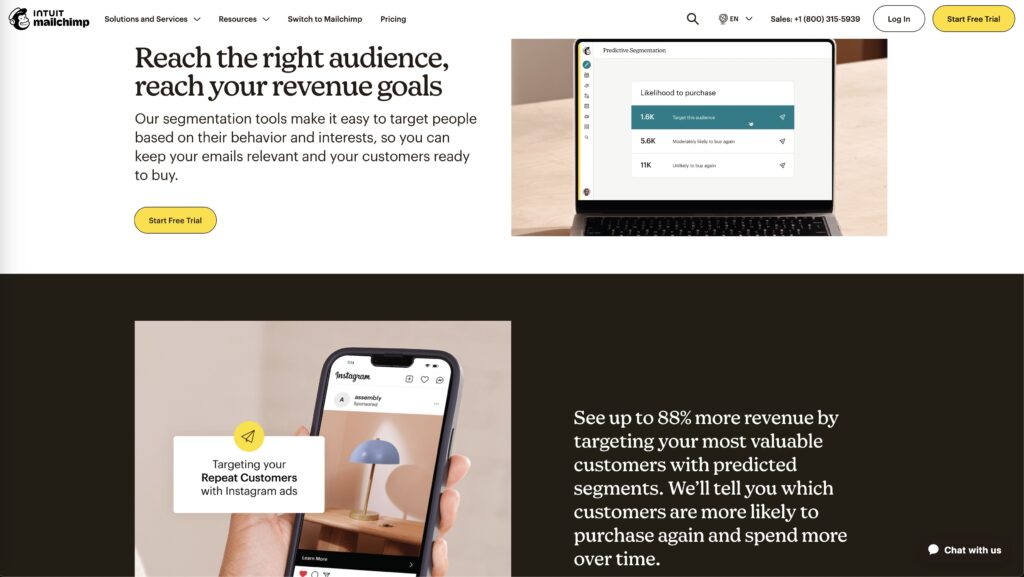
Growing Businesses: Taking Your Email Strategy to the Next Level with Shopify Email vs Mailchimp
As your business grows, your email marketing strategy needs to scale with it. You’ll need more advanced tools to handle a larger customer base, automate processes, and generate detailed reports that help you make data-driven decisions. Here’s how Shopify Email vs Mailchimp can help growing businesses.
Shopify Email for Growing Businesses:
For growing businesses that are still centered on Shopify, Shopify Email remains a strong choice. Its integration with Shopify ensures that your customer data is always up-to-date and ready for use in your email campaigns. As your email list expands, Shopify Email makes it easy to send more emails without having to overhaul your entire marketing system. The simple pricing structure also means that you can continue to scale without worrying about rapidly increasing costs.
Shopify Email may not offer the most advanced automation tools on the market, but for businesses focused on scaling within e-commerce, it’s a reliable tool that does the job. As your business grows, you can send more complex campaigns, such as product recommendations, limited-time offers, and abandoned cart reminders, all tailored to customer behavior within your Shopify store.
- Use Case Example: A fashion retailer scaling from 500 to 5,000 customers can use Shopify Email to automate abandoned cart emails, recommend personalized products, and send exclusive discount offers to their most loyal customers.
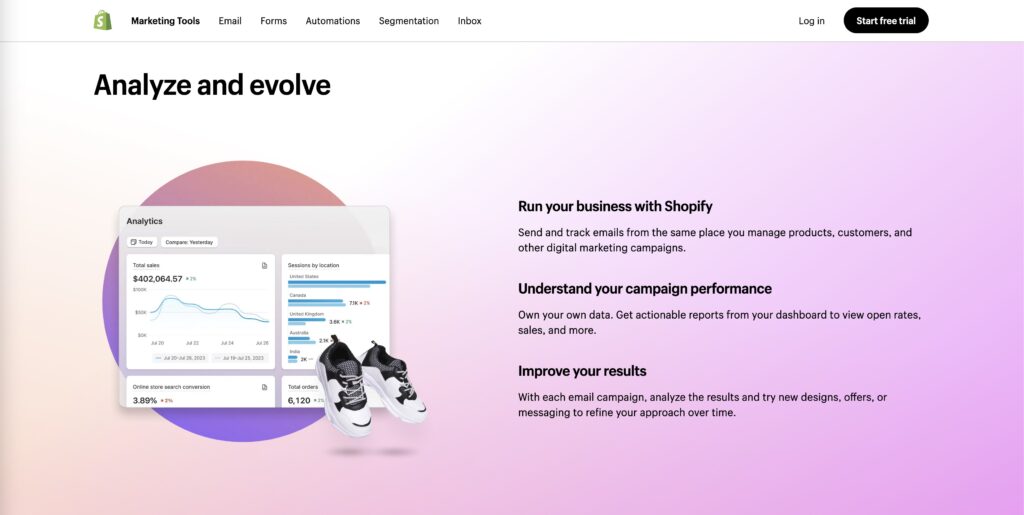
Mailchimp for Growing Businesses:
For businesses that require more advanced marketing tools as they grow, Mailchimp is an excellent option. With features like dynamic content, multi-step automation workflows, and advanced segmentation, Mailchimp allows growing businesses to create highly personalized and data-driven email campaigns. Mailchimp’s ability to segment customers based on specific behaviors (e.g., purchasing habits, browsing activity) enables businesses to fine-tune their marketing efforts and target customers with greater precision.
Mailchimp’s automation tools are particularly useful for growing businesses. You can set up customer journeys that guide leads through the sales funnel, nurture existing customers with re-engagement campaigns, and even create upsell opportunities based on past purchases. The platform also offers predictive insights, allowing you to anticipate customer behavior and optimize your marketing strategies accordingly.
- Use Case Example: A mid-sized subscription box service can use Mailchimp to automate customer journeys, from welcome emails for new subscribers to re-engagement campaigns for customers who are about to cancel their subscription. By tracking how customers interact with each email, the company can adjust its strategy to maximize retention and upsell opportunities.
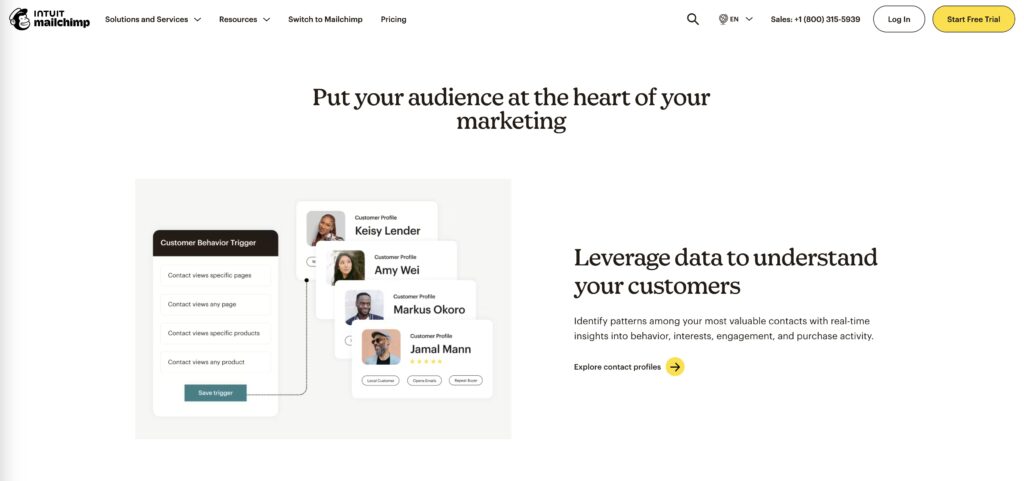
Fully Operational Businesses: Advanced Marketing Features and Automation with Shopify Email vs Mailchimp
For fully operational businesses or large enterprises, email marketing requires powerful tools that can handle advanced workflows, deep customization, and in-depth analytics. Both Shopify Email vs Mailchimp offer solutions, but their approaches vary significantly in terms of sophistication.
Shopify Email for Fully Operational Businesses:
Fully operational businesses that are deeply integrated into Shopify’s ecosystem may find Shopify Email to be a reliable tool for their email marketing needs. While it doesn’t offer the same level of advanced automation or segmentation as Mailchimp, Shopify Email’s strength lies in its ability to seamlessly connect with Shopify data. For businesses that rely on Shopify for everything from customer orders to inventory management, this integration can streamline marketing efforts and ensure that campaigns are always data-driven.
For businesses that prefer simplicity and consistency, Shopify Email is an effective way to maintain communication with a large customer base, send personalized product recommendations, and drive engagement through targeted email campaigns. It may not be the go-to solution for companies that require highly complex automations, but it provides enough features to meet the needs of most large e-commerce businesses.
- Use Case Example: A global e-commerce store that manages multiple product lines and customer segments can use Shopify Email to send targeted campaigns based on customer purchase history, location, and product preferences, all while benefiting from Shopify’s built-in data tracking.
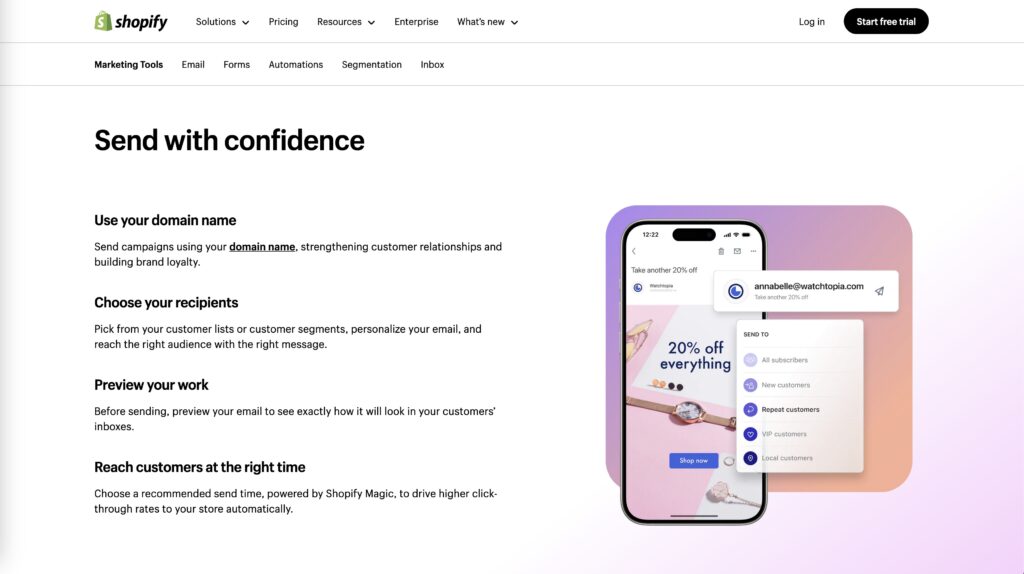
Mailchimp for Fully Operational Businesses:
For enterprises with more complex marketing needs, Mailchimp offers a suite of advanced features that can handle the scale and sophistication required. Mailchimp’s automation capabilities are particularly valuable for fully operational businesses that need to create multi-step customer journeys, trigger emails based on a wide range of customer actions, and send hyper-targeted campaigns to different segments of their audience.
Mailchimp’s predictive insights and advanced analytics also give large businesses a competitive edge by providing data-driven recommendations on how to optimize campaigns for maximum impact. For companies that operate across multiple regions or need to localize their messaging for different markets, Mailchimp’s advanced segmentation tools allow for highly customized campaigns that speak to specific audiences, whether that’s based on location, language, or behavior.
- Use Case Example: A multinational retail company can use Mailchimp to manage its email marketing across different regions, tailoring campaigns to each market’s language and culture while using automation workflows to send timely product recommendations and promotions based on customer behavior.
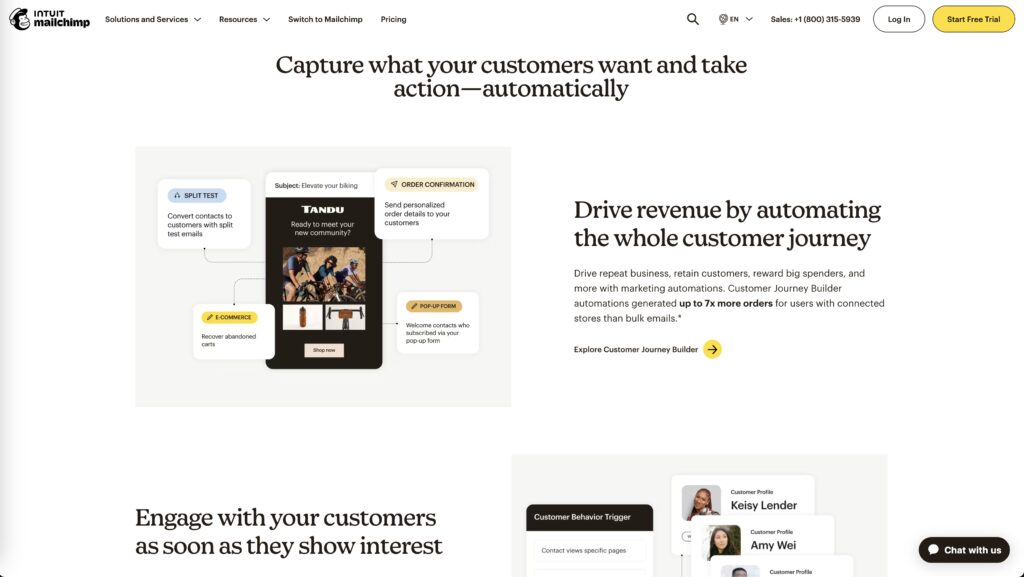
Pricing Comparison: What You Get for Your Money with Shopify Email vs Mailchimp
When it comes to pricing, Shopify Email vs Mailchimp offer different structures that cater to businesses of varying sizes. Let’s take a closer look at how their pricing models stack up.
Shopify Email Pricing:
Shopify Email is known for its straightforward and affordable pricing model, which scales as your business grows:
- Free Tier: Shopify Email allows businesses to send up to 10,000 emails per month for free, which is ideal for small businesses or startups just getting started.
- Paid Plan: After the free tier, businesses are charged $1 for every 1,000 additional emails sent. This transparent and affordable pricing structure makes Shopify Email a great option for businesses that are looking to scale their email marketing without incurring steep costs.
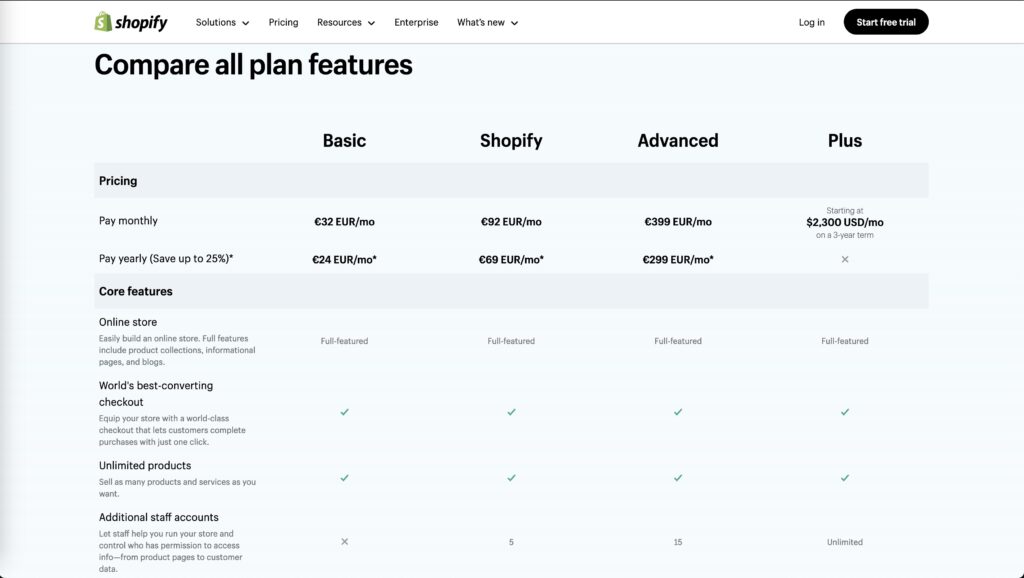
Mailchimp Pricing:
Mailchimp offers a more tiered pricing model, which varies depending on the size of your email list and the features you need:
- Free Plan: Mailchimp’s free plan includes up to 500 contacts and 1,000 email sends per month, with limited automation and segmentation features.
- Essentials Plan: Starting at $13 per month for 500 contacts, the Essentials plan includes A/B testing, custom branding, and more advanced segmentation.
- Standard Plan: Starting at $20 per month for 500 contacts, the Standard plan unlocks features like advanced automation, retargeting ads, and enhanced reporting.
- Premium Plan: For businesses with more extensive marketing needs, Mailchimp’s Premium plan starts at $350 per month, offering unlimited email sends, predictive insights, and advanced segmentation tools.
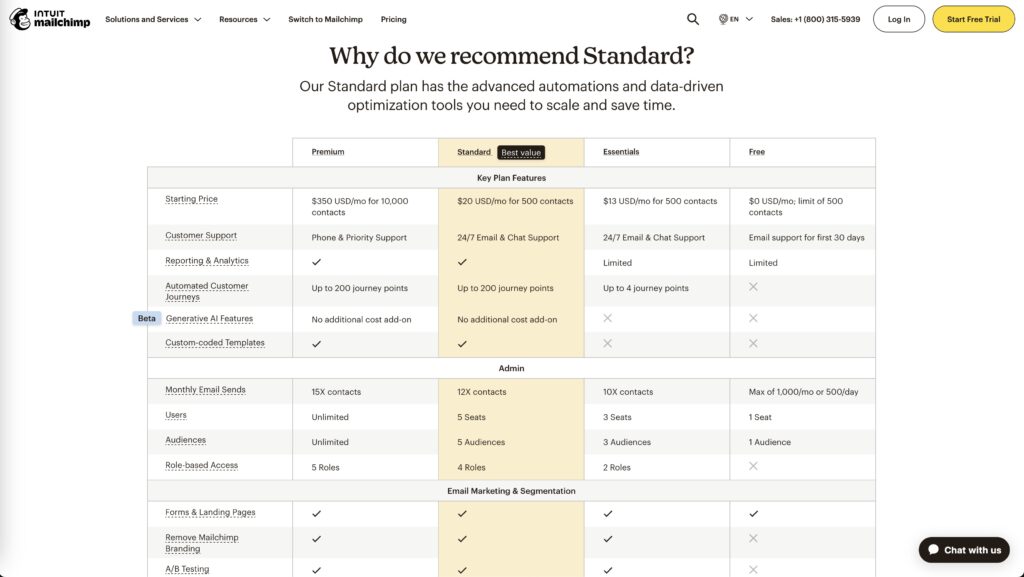
User Experience: Ease of Use and Onboarding with Shopify Email vs Mailchimp
Shopify Email:
For businesses already familiar with the Shopify platform, Shopify Email is incredibly user-friendly. Its intuitive drag-and-drop email builder allows users to create professional email campaigns quickly and efficiently, without the need for extensive technical knowledge. The integration with Shopify ensures that customer data is readily available, making it easy to personalize emails based on purchase history, browsing behavior, or other Shopify data points.
One of the main advantages of Shopify Email’s user experience is its simplicity. The platform is designed to streamline the process of creating and sending emails, which is ideal for businesses that want to focus on running their e-commerce operations rather than learning a new tool.
Mailchimp:
While Mailchimp offers more advanced features, its user experience is slightly more complex, especially for those new to email marketing. Mailchimp’s interface is packed with tools for automation, segmentation, and A/B testing, which can be overwhelming at first. However, the platform provides a wealth of tutorials, guides, and customer support options to help users get up to speed.
For businesses willing to invest the time to learn, Mailchimp’s advanced features offer unparalleled customization and control over email marketing campaigns. The ability to create multi-step automation workflows, experiment with A/B testing, and generate detailed reports makes Mailchimp a powerful tool for businesses looking to optimize their marketing efforts.
Customization Capabilities: Tailoring Campaigns for Maximum Engagement
Shopify Email:
While Shopify Email provides a range of customizable templates, its overall customization capabilities are somewhat limited compared to Mailchimp. Businesses can modify templates to match their brand’s colors, fonts, and imagery, but the platform doesn’t offer the same level of detailed customization or dynamic content options that Mailchimp provides. For businesses that prioritize simplicity and consistency, Shopify Email’s customization options are sufficient for most needs.
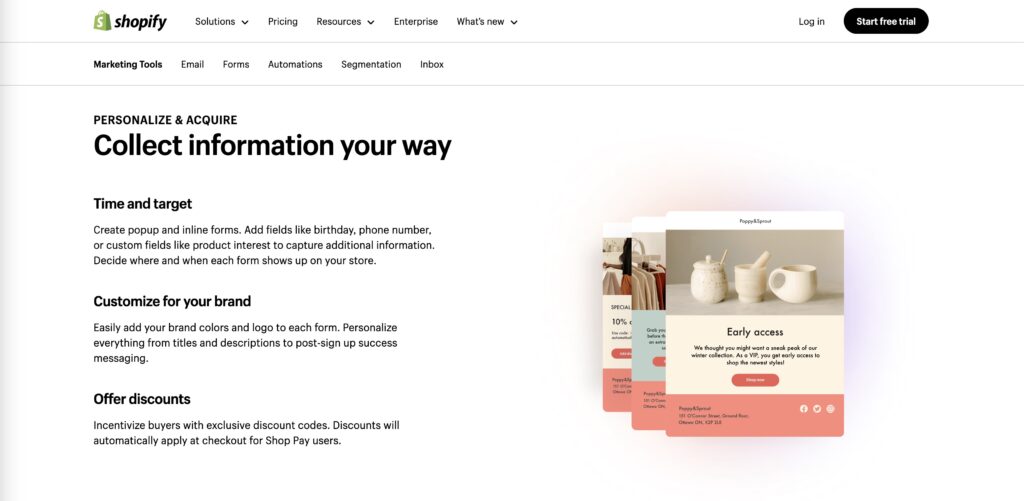
Mailchimp:
Mailchimp excels in customization, offering businesses a wide range of tools to tailor their email campaigns. The platform allows for dynamic content insertion, conditional formatting, and advanced HTML editing, giving businesses the ability to create highly personalized emails that resonate with different audience segments. Mailchimp’s customization features also enable businesses to create more interactive and visually appealing campaigns, which can improve engagement and conversion rates.
Integrations and Ecosystem: Shopify Email vs Mailchimp Multi-Platform Capabilities
Shopify Email:
Shopify Email is deeply integrated into the Shopify ecosystem, allowing businesses to leverage their Shopify data for email marketing. This makes it the ideal choice for businesses that are fully invested in the Shopify platform, as it ensures a seamless flow of customer data and product information between the store and the email tool. However, Shopify Email’s integration capabilities outside of the Shopify ecosystem are limited.
Mailchimp:
Mailchimp is known for its versatility when it comes to integrations. The platform connects with over 300 different apps and tools, including popular platforms like Shopify, WooCommerce, Salesforce, and WordPress. This makes Mailchimp an excellent option for businesses that use multiple platforms and need their email marketing tool to integrate seamlessly with their existing tech stack.

Analytics and Reporting: Measuring Success with Shopify Email vs Mailchimp
Shopify Email:
Shopify Email provides basic reporting features that are sufficient for small to mid-sized businesses with straightforward email marketing needs. The platform allows users to track essential metrics such as email opens, click-through rates, and unsubscribes. These basic metrics provide a quick overview of how well your campaigns are performing, helping businesses identify what works and where improvements are needed.
However, Shopify Email lacks the more advanced analytics that larger businesses may require. For instance, while you can track individual campaign performance, there is no built-in feature for tracking conversions or attributing revenue directly to email campaigns. Additionally, Shopify Email doesn’t offer detailed insights into audience engagement over time, meaning businesses may miss out on deeper trends that could inform long-term strategy.

Mailchimp:
In contrast, Mailchimp excels in analytics and reporting, offering a wealth of data that allows businesses to measure the effectiveness of their email marketing campaigns in detail. Beyond standard metrics like open rates and click-through rates, Mailchimp provides advanced insights such as:
- Revenue Attribution: Mailchimp allows businesses to track how much revenue their email campaigns generate, giving a clear understanding of the return on investment (ROI) for each campaign.
- Engagement Trends: With Mailchimp, businesses can analyze engagement trends over time, allowing them to refine their email strategies based on customer behavior.
- A/B Testing Insights: Mailchimp’s A/B testing features come with detailed reports on which variations of your emails perform best, whether that’s related to subject lines, content, or send times.
- Conversion Tracking: Mailchimp offers integration with e-commerce platforms like Shopify, WooCommerce, and Magento, allowing businesses to track sales and other conversions directly tied to their email campaigns.
Mailchimp’s advanced reporting features make it particularly useful for growing businesses and enterprises that rely on data-driven decision-making. Whether you need to adjust your messaging for specific audience segments or measure the long-term success of your email campaigns, Mailchimp provides the tools needed to make informed marketing decisions.

Final Verdict: Shopify Email vs Mailchimp for 2024
After a comprehensive look at Shopify Email and Mailchimp, it’s clear that both platforms excel in different areas, making them suitable for businesses at different stages of growth. Here’s a quick summary to help you decide:
- For Startups and Small Businesses: Shopify Email is the best choice for Shopify users who need a simple, affordable, and integrated email marketing tool. It’s perfect for e-commerce startups and small businesses looking to engage with their customers through straightforward campaigns.
- For Growing Businesses: As your business scales, Mailchimp offers the advanced automation, segmentation, and analytics features necessary to support more sophisticated marketing strategies. Its ability to handle complex workflows and provide detailed reporting makes it ideal for businesses looking to refine and expand their email marketing efforts.
- For Fully Operational Businesses and Enterprises: Large-scale businesses with diverse marketing needs will benefit most from Mailchimp. Its powerful automation features, advanced reporting tools, and ability to integrate with multiple platforms make it a versatile choice for enterprises that require a comprehensive email marketing solution.
3 Top Alternatives to Shopify Email vs Mailchimp in 2024
If you’re still undecided, here are three excellent alternatives to consider for your email marketing needs:
- Klaviyo: A leading email marketing platform for e-commerce businesses, Klaviyo integrates seamlessly with Shopify and offers powerful automation and segmentation features. It’s perfect for businesses looking to maximize their email marketing efforts within the e-commerce space.
- Sendinblue: Sendinblue offers a range of marketing tools, including email and SMS marketing, as well as marketing automation. Its pricing is highly competitive, making it a strong contender for businesses looking for an affordable all-in-one marketing platform.
- GetResponse: GetResponse is another all-in-one marketing solution that includes email marketing, landing pages, webinars, and CRM functionality. It’s a great option for businesses that want to manage multiple aspects of their digital marketing in one place.

